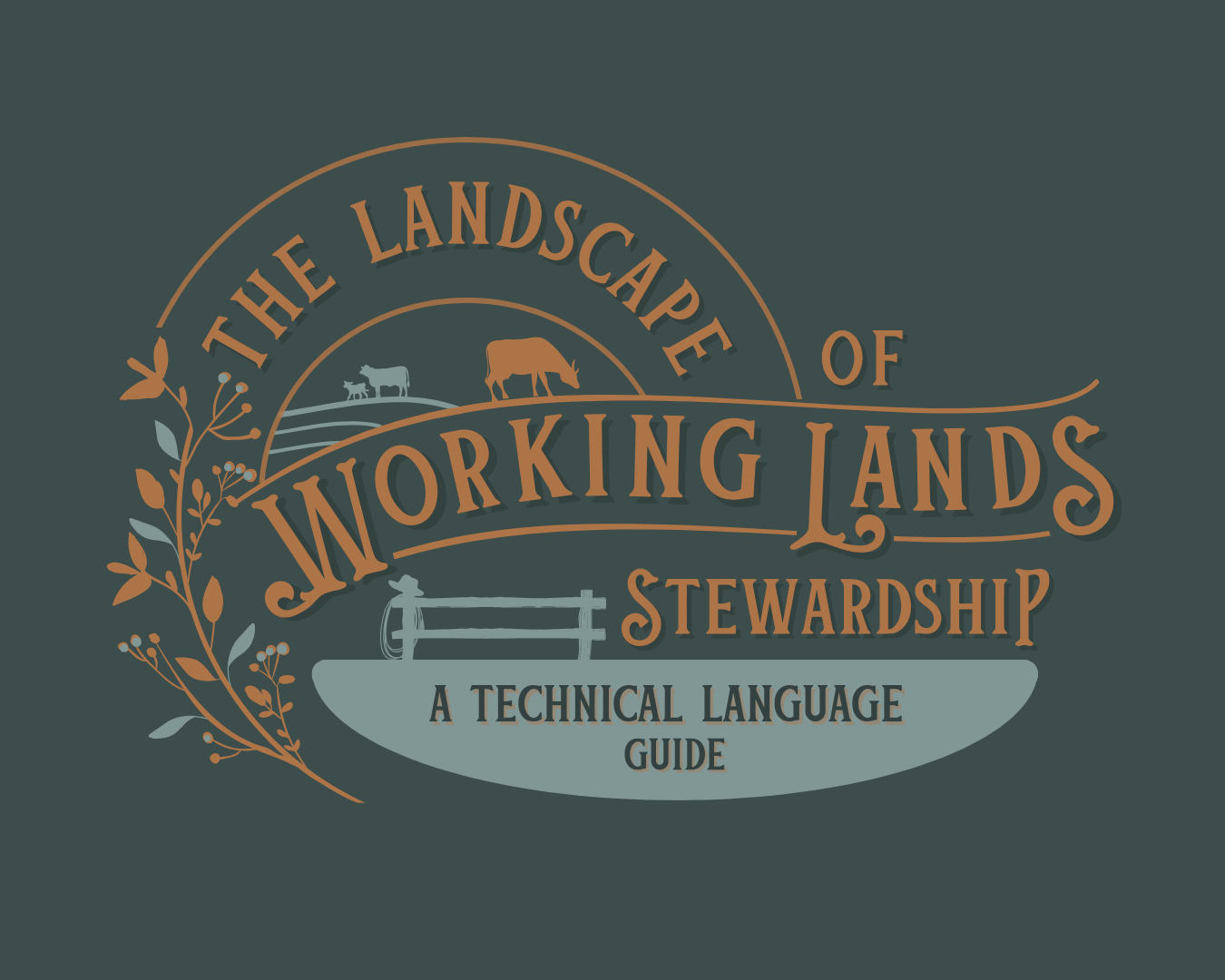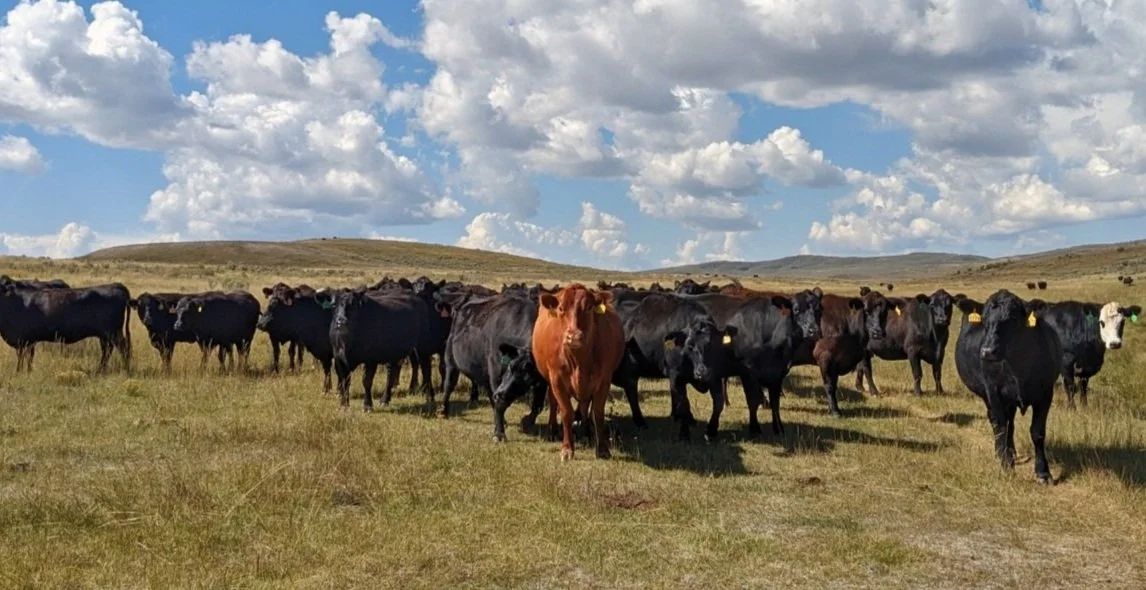A healthy landscape supports happy creatures.
Rangelands comprise over 770 million acres in the United States and account for over half of the earth’s terrestrial surface. These vast areas are vital multi-use landscapes that supply stakeholders with various ecosystem services: clean water and air, carbon storage, forage, wildlife habitat, etc. Ranching families are the stewards of these lands, rely on healthy landscapes for their livelihoods, and serve as the foundation of rural economies. Well-managed landscapes are ecologically productive and economically profitable. Land stewardship ensures that both ranching operations and ecosystem functions are viable in the future.
The jargon surrounding land stewardship has evolved to have overlapping philosophies and dual meanings, leaving a jumbled chasm of terms and keywords. Very few of these terms have clear, exact definitions- most are vague and philosophical, leaving practical applications up for interpretation. Management practices can be simultaneously categorized under multiple philosophies, or have a more narrow interpretation based on site-specific adaptations.
Language matters: we need to understand the landscape of jargon surrounding working lands stewardship to effectively communicate goals and undertones.






Read more about working lands stewardship terms below:
-
Sustainable agriculture is widely regarded as a catch-all term in the stewardship landscape. Generally, sustainable agriculture is interpreted as meeting present food and fiber needs without jeopardizing future agricultural operations. The USDA has a technical definition written in US Code as “an integrated system of plant and animal production practices having a site-specific application” that accomplishes five long-term goals:
Satisfy human food and fiber needs.
Enhance environmental quality and the natural resource base upon which the agriculture economy depends.
Make the most efficient use of nonrenewable resources and on-farm resources and integrate, where appropriate, natural biological cycles and controls.
Sustain the economic viability of farm operations.
Enhance the quality of life for farmers and society as a whole.
Sustainable agriculture was one of the first terms coined in response to industrialized agriculture. After the Second World War, the assembly-line mentality was rapidly imposed onto agriculture with the goal of increased efficiency and larger yields. This industrial approach was not built to last- it ignores that operations need to be managed as ecosystems. Sustainable agriculture set the foundation for how to revitalize the agricultural industry.
-
Noble Research Institute defines the core of regenerative agriculture as the “process of restoring degraded soils using practices based on ecological principles.” Regenerative agriculture uses holistic principles that consider the entire ecological system when deciding management practices. Practitioners have a clear focus on improving land and soil health and quality, often separating themselves from “sustainable” language. They argue that sustainable agriculture reduces harm and maintains current systems, but doesn’t necessarily try to remedy degradation.
-
Holistic management has taken on multiple meanings. In more broad usage, holistic management is defined by Holistic Management International as a “value-based, adaptive management, decision-making framework that integrates all aspects of planning for social, economic, and environmental considerations.” Closely aligned with regenerative agriculture, holistic management operates from a birds-eye view, synergizing the interconnected system. Whole Ranch/Farm Planning is a popular strategy incorporating holistic principles into operations, including ecological and economic goals for individual farm businesses.
Holistic management has also been coined by Allan Savory, a Zimbabwean farmer who popularized this term to describe an experimental approach to grazing management. He supports the idea that high stocking rates with rapid rotation can reverse desertification and climate change. He founded the Savory Institute with the goal to globally restore grasslands. Savory is a controversial character within rangeland management and has drawn criticism for his intense claims.
-
Agroecology is unique in that it describes a field of study and management philosophy. As a science, agroecology tackles the interdisciplinary nature of food systems, studying “the ecology of the entire food system, encompassing ecological, economic, and social dimensions” (Francis et al., 2003). As a practice, the United Nations defines agroecology as “a holistic and integrated approach that simultaneously applies ecological and social concepts and principles to the design and management of sustainable agriculture and food systems”. Essentially, it encompasses the entire framework, from research to implementation, for creating a sustainable food system. Agroecology is a common term within academic literature.
-
Climate-smart agriculture is defined as “an approach for transforming and reorienting agricultural systems to support food security under the new realities of climate change" (Lipper et al 2014). Climate-smart agriculture is implemented through climate-smart practices, which are sustainable land management prescriptions that specifically reduce greenhouse gas emissions and/or sequester carbon. Climate-smart agriculture also takes into account future climate risks. In the West, the main risks include prolonged drought and reduced snowpack.
The Natural Resource Conservation Service (NRCS) has defined various climate-smart mitigation activities, which are land management treatments that can be applied to support management objectives. Soils serve as the ecological foundation of rangeland systems, sustaining above-ground productivity, water and air quality, and carbon sequestration. As a result, climate-smart grazing emphasizes improving soil health parameters.


